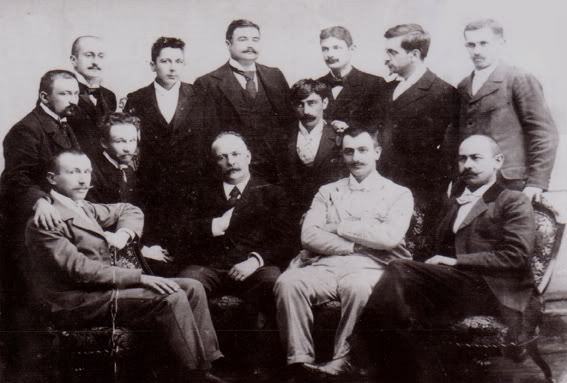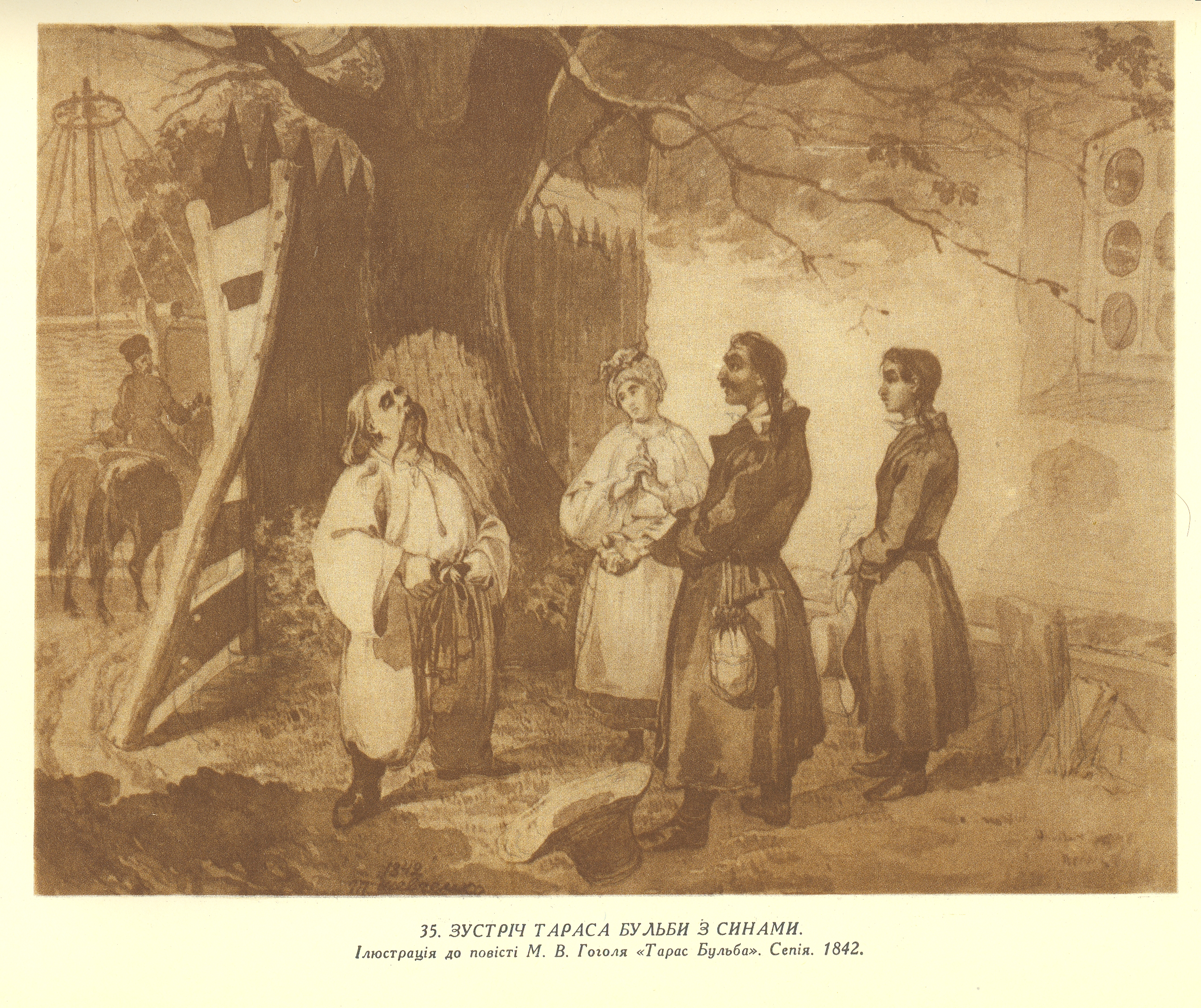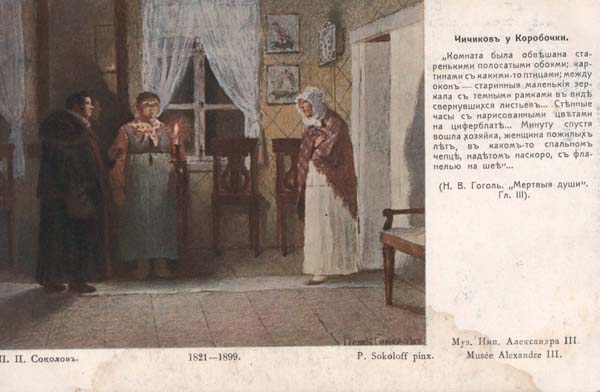|
Milovan Glišić
Milovan Glišić (6 January 1847 – 20 January 1908) was a Serbian writer, dramatist, translator, and literary theorist. He is sometimes referred to as ''the Serbian Gogol''. Legacy Glišić is considered to be one of the best translators of his time and several of his short stories including ''Prva Brazda'' and ''Glava Šećera'' are studied in Serbian schools and included in various anthologies of short stories.Josić Višnjić, Miroslav, Filip Višnjić, Belgrade, 1999., p. 5. His translations of Russian writers Gogol and Tolstoy severely influenced Serbian culture of that time and future writers Stevan Sremac, Svetozar Ćorović, Branislav Nušić and many others. According to Slobodan Jovanović, Glišić was one of the first Serbian short story writers to attempt a more serious characterization in his works. He was awarded Order of the Cross of Takovo and Order of St. Sava of the third and the fourth class. Works Comedies * Two Farthings (Dva cvancika), 1882 ... [...More Info...] [...Related Items...] OR: [Wikipedia] [Google] [Baidu] |
Valjevo
Valjevo (Serbian Cyrillic: Ваљево, ) is a city and the administrative center of the Kolubara District in western Serbia. According to the 2011 census, the administrative area of Valjevo had 90,312 inhabitants, 59,073 of whom were urban dwellers. Valjevo occupies an area of 905 square kilometers; its altitude is 185 meters. The city is situated along the river Kolubara, a tributary of the Sava river. History In the nearby village of Petnica, scientists found the first complete neolithic habitat in Serbia and dated it at 6,000 years old. In Roman times this area was part of the province of Moesia. Valjevo was mentioned for the first time in 1393. It was an important staging post on the trade route that connected Bosnia to Belgrade. Valjevo became significant during the 16th and 17th centuries under stable Ottoman rule. According to Matija Nenadović, there were 24 mosques in Valjevo in the late 18th century. At the beginning of the 19th century most of the territor ... [...More Info...] [...Related Items...] OR: [Wikipedia] [Google] [Baidu] |
Slobodan Jovanović
Slobodan Jovanović ( sr-Cyrl, Слободан Јовановић; 3 December 1869 – 12 December 1958) was a Serbian and Yugoslav writer, historian, lawyer, philosopher, literary critic, diplomat, politician and one of the most prominent intellectuals of his time. He was the professor at the University of Belgrade Faculty of Law (1897—1940), Rector of the University of Belgrade (1913–14 and 1920–21), and the President of the Serbian Royal Academy (1928–1931). He took part at the Paris Peace Conference (1919) as an expert for the Yugoslav Government. Jovanović was the Deputy Prime Minister (March 1941 - June 1942) and the Prime Minister of the Royal Yugoslav government-in-exile in London between January 1942 and June 1943. After World War II, the new Communist authorities of Yugoslavia sentenced him in absentia to 20 years' imprisonment. Jovanović remained at liberty for the rest of his life in London. Biography Slobodan Jovanović was born in Újvidék, Austria- ... [...More Info...] [...Related Items...] OR: [Wikipedia] [Google] [Baidu] |
Ivan Goncharov
Ivan Alexandrovich Goncharov (, also ; rus, Ива́н Алекса́ндрович Гончаро́в, r=Iván Aleksándrovich Goncharóv, p=ɪˈvan ɐlʲɪkˈsandrəvʲɪdʑ ɡənʲtɕɪˈrof; – ) was a Russian novelist best known for his novels '' The Same Old Story'' (1847), '' Oblomov'' (1859), and '' The Precipice'' (1869, also translated as ''Malinovka Heights''). He also served in many official capacities, including the position of censor. Goncharov was born in Simbirsk into the family of a wealthy merchant; as a reward for his grandfather's military service, they were elevated to gentry status. He was educated at a boarding school, then the Moscow College of Commerce, and finally at Moscow State University. After graduating, he served for a short time in the office of the Governor of Simbirsk, before moving to Saint Petersburg where he worked as government translator and private tutor, while publishing poetry and fiction in private almanacs. Goncharov's first novel, ... [...More Info...] [...Related Items...] OR: [Wikipedia] [Google] [Baidu] |
Oblomov
''Oblomov'' ( ru , link=no, Обломов; ) is the second novel by Russian writer Ivan Goncharov, first published in 1859. Ilya Ilyich Oblomov is the central character of the novel, portrayed as the ultimate incarnation of the superfluous man, a symbolic character in 19th-century Russian literature. Oblomov is a young, generous nobleman who seems incapable of making important decisions or undertaking any significant actions. Throughout the novel he rarely leaves his room or bed. In the first 50 pages, he manages only to move from his bed to a chair. The book was considered a satire of Russian intelligentsia. The novel was popular when it came out, and some of its characters and devices have imprinted on Russian culture and language. Creation and publication Goncharov first thought of writing ''Oblomov'' in the mid-1840s, soon after publishing his first novel '' A Common Story.'' In 1849 he wrote "Episode from an Unfinished Novel: Oblomov's Dream", a short story that was p ... [...More Info...] [...Related Items...] OR: [Wikipedia] [Google] [Baidu] |
Ivan Fyodorovich Shponka And His Aunt
"Ivan Fyodorovich Shponka and His Aunt" (Иван Фёдорович Шпонька и его тётушка, ''Ivan Fyodorovich Shponka i yevo tyotushka''; 1832) is part of the collection ''Evenings on a Farm Near Dikanka'' by Nikolai Gogol. Origin This story is actually unfinished, and Gogol makes it seem as though Rudy Panko's friend wrote the story down and gave it to him, but his wife, who cannot read, accidentally used some of the book to bake a pie and only a fragment remains. His friend meant to get the story again when he went through Gadyach, where the man lives, but he forgot and only remembered six miles (10 km) past the village. Plot In the story, Ivan Shponka is a young man who is not very bright but attends to his affairs better than anyone. He was made as the monitor in his class when young though there were some much better than he, and won the affection of one of the most feared teachers at school. He finally finishes the second class (sixth grade approxim ... [...More Info...] [...Related Items...] OR: [Wikipedia] [Google] [Baidu] |
Taras Bulba
''Taras Bulba'' (russian: «Тарас Бульба»; ) is a romanticized historical novella set in the first half of the 17th century, written by Nikolai Gogol (1809-1852). It features elderly Zaporozhian Cossack Taras Bulba and his sons Andriy and Ostap. The sons study at the Kiev Academy and then return home, whereupon the three men set out on a journey to the Zaporizhian Sich (the Zaporizhian Cossack headquarters, located in southern Ukraine) where they join other Cossacks and go to war against Poland. The story was initially published in 1835 as part of the ''Mirgorod'' collection of short stories, but a much expanded version appeared in 1842 with some differences in the storyline. The 1842 text has been described by as a "paragon of civic virtue and a force of patriotic edification", contrasting the rhetoric of the 1835 version with its "distinctly Cossack jingoism". Inspiration The character of Taras Bulba, the main hero of this novel, is a composite of severa ... [...More Info...] [...Related Items...] OR: [Wikipedia] [Google] [Baidu] |
Dead Souls
''Dead Souls'' (russian: «Мёртвые души», ''Mjórtvyje dúshi'') is a novel by Nikolai Gogol, first published in 1842, and widely regarded as an exemplar of 19th-century Russian literature. The novel chronicles the travels and adventures of Pavel Ivanovich Chichikov (Russian: Павел Иванович Чичиков) and the people whom he encounters. These people typify the Russian middle aristocracy of the time. Gogol himself saw his work as an " epic poem in prose", and within the book characterised it as a "novel in verse". Gogol intended the novel to be the first part of a three-volume work, but burned the manuscript of the second part shortly before his death. Although the novel ends in mid-sentence (like Sterne's ''Sentimental Journey''), it is regarded by some as complete in the extant form. Title The original title, as shown on the illustration (cover page), was "The Wanderings of Chichikov, or Dead Souls. ''Poema''", which contracted to merely "Dead Sou ... [...More Info...] [...Related Items...] OR: [Wikipedia] [Google] [Baidu] |
La Sanfelice
''La Sanfelice'' (or ''La San Felice'') is an 1864 novel by the French writer Alexandre Dumas.Maxwell p.275 It depicts the arrest and execution in Naples of Luisa Sanfelice, who was accused of conspiring with the French and their supporters against Ferdinand I of the Two Sicilies during the French Revolutionary War. Lord Nelson and Lady Hamilton, who were in Naples at the time, also feature as characters. Film adaptations In 1942 the novel was used as the basis for the historical film ''Luisa Sanfelice'' directed by Leo Menardi. The 1968 film ''Emma Hamilton'' directed by Christian-Jaque was also loosely based on the novel. Paolo and Vittorio Taviani made a television film ''Luisa Sanfelice Luisa or Luigia Sanfelice (1764–1800) was an Italian aristocrat who was executed by Ferdinand I of the Two Sicilies because of her involvement with the French-backed Parthenopean Republic during the French Revolutionary Wars, although Sanfelice ...'' in 2004. References Bibliography * M ... [...More Info...] [...Related Items...] OR: [Wikipedia] [Google] [Baidu] |
Maurice Polydore-Marie-Bernard Maeterlinck
Maurice Polydore Marie Bernard Maeterlinck (29 August 1862 – 6 May 1949), also known as Count (or Comte) Maeterlinck from 1932, was a Belgian playwright, poet, and essayist who was Flemish but wrote in French. He was awarded the Nobel Prize in Literature in 1911 "in appreciation of his many-sided literary activities, and especially of his dramatic works, which are distinguished by a wealth of imagination and by a poetic fancy, which reveals, sometimes in the guise of a fairy tale, a deep inspiration, while in a mysterious way they appeal to the readers' own feelings and stimulate their imaginations". The main themes in his work are death and the meaning of life. He was a leading member of La Jeune Belgique group and his plays form an important part of the Symbolist movement. In later life, Maeterlinck faced credible accusations of plagiarism. Biography Early life Maeterlinck was born in Ghent, Belgium, to a wealthy, French-speaking family. His mother, Mathilde Colette Françoi ... [...More Info...] [...Related Items...] OR: [Wikipedia] [Google] [Baidu] |
Princess Maleine
''Princess Maleine'' (french: La Princesse Maleine) is a play by Belgian playwright Maurice Maeterlinck. It was the author's first play. It is an adaptation of the Brothers Grimm's Maid Maleen. Publication The play was first published in serial form in ''La Société Nouvelle'', a Brussels periodical. Since Maeterlinck desired the play be published in book form, his mother tightened her budget and gave him 250 francs. The play was printed in December, 1889. Maeterlinck mailed a copy of his play to Stéphane Mallarmé, from whom it was eventually passed to Octave Mirbeau, who wrote a very warm review of the work in August 1890 for ''Le Figaro''. In the review he said the play was "superior in beauty to what is most beautiful in Shakespeare." After this rapturous reception, two invitations were offered to produce the play in France in October 1890: first from Paul Fort, director of the experimental Symbolist 'Théâtre Mixte' – soon to become the 'Théâtre d'Art' – and secon ... [...More Info...] [...Related Items...] OR: [Wikipedia] [Google] [Baidu] |
Honoré De Balzac
Honoré de Balzac ( , more commonly , ; born Honoré Balzac;Jean-Louis Dega, La vie prodigieuse de Bernard-François Balssa, père d'Honoré de Balzac : Aux sources historiques de La Comédie humaine, Rodez, Subervie, 1998, 665 p. 20 May 1799 – 18 August 1850) was a French novelist and playwright. The novel sequence ''La Comédie humaine'', which presents a panorama of post-Napoleonic French life, is generally viewed as his '' magnum opus''. Owing to his keen observation of detail and unfiltered representation of society, Balzac is regarded as one of the founders of realism in European literature. He is renowned for his multi-faceted characters; even his lesser characters are complex, morally ambiguous and fully human. Inanimate objects are imbued with character as well; the city of Paris, a backdrop for much of his writing, takes on many human qualities. His writing influenced many famous writers, including the novelists Émile Zola, Charles Dickens, Marcel Proust, ... [...More Info...] [...Related Items...] OR: [Wikipedia] [Google] [Baidu] |
La Peau De Chagrin
''La Peau de chagrin'' (, ''The Skin of Shagreen''), known in English as ''The Magic Skin and The Wild Ass's Skin'', is an 1831 novel by French novelist and playwright Honoré de Balzac (1799–1850). Set in early 19th-century Paris, it tells the story of a young man who finds a magic piece of shagreen (untanned skin from a wild ass) that fulfills his every desire. For each wish granted, however, the skin shrinks and consumes a portion of his physical energy. ''La Peau de chagrin'' belongs to the ''Études philosophiques'' group of Balzac's sequence of novels, '' La Comédie humaine''. Before the book was completed, Balzac created excitement about it by publishing a series of articles and story fragments in several Parisian journals. Although he was five months late in delivering the manuscript, he succeeded in generating sufficient interest that the novel sold out instantly upon its publication. A second edition, which included a series of twelve other "philosophical tales", ... [...More Info...] [...Related Items...] OR: [Wikipedia] [Google] [Baidu] |







